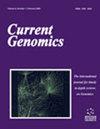High Prevalence of a c.5979dupA Variant in the Dysferlin Gene (DYSF) in Individuals from a Semiarid Region of Brazil
IF 1.4
4区 生物学
Q4 BIOCHEMISTRY & MOLECULAR BIOLOGY
引用次数: 0
Abstract
Background: Dysferlinopathies represent a group of limb girdle or distal muscular dystrophies with an autosomal-recessive inheritance pattern resulting from the presence of pathogenic variants in the dysferlin gene (DYSF). Objective: In this work, we describe a population from a small city in Brazil carrying the c.5979dupA pathogenic variant of DYSF responsible for limb girdle muscular dystrophy type 2R and distal muscular dystrophy. Methods: Genotyping analyses were performed by qPCR using customized probe complementary to the region with the duplication under analysis in the DYSF. Results: A total of 104 individuals were examined. c.5979dupA was identified in 48 (46.15%) individuals. Twenty-three (22%) were homozygotes, among whom 13 (56.5%) were female. A total of 91.3% (21) of homozygous individuals had a positive family history, and seven (30.4%) reported consanguineous marriages. Twenty-five (24%) individuals were heterozygous (25.8±16 years) for the same variant, among whom 15 (60%) were female. The mean CK level was 697 IU for homozygotes, 140.5 IU for heterozygotes and 176 IU for wild-type homo-zygotes. The weakness distribution pattern showed 17.3% of individuals with a proximal pattern, 13% with a distal pattern and 69.6% with a mixed pattern. Fatigue was present in 15 homozygotes and one heterozygote. Conclusion: The high prevalence of this variant in individuals from this small community can be explained by a possible founder effect associated with historical, geographical and cultural aspects.一种c.5979dupA异常铁蛋白基因(DYSF)变异在巴西半干旱地区个体中的高流行率
背景:异常铁蛋白病是一组肢体带或远端肌肉营养不良症,具有常染色体隐性遗传模式,由异常铁蛋白基因(DYSF)的致病变异引起。目的:在这项工作中,我们描述了来自巴西一个小城市的人群携带的c.5979dupA致病变异的DYSF负责肢带肌营养不良2R型和远端肌营养不良。方法:采用定制探针与DYSF中待分析重复区域互补的qPCR方法进行基因分型分析。结果:共检查104例。检出c.5979dupA 48例(46.15%)。纯合子23只(22%),其中雌性13只(56.5%)。共有91.3%(21人)的纯合个体有阳性家族史,7人(30.4%)报告有近亲婚姻。同一变异的杂合个体25例(24%)(25.8±16岁),其中女性15例(60%)。纯合子CK均值为697 IU,杂合子CK均值为140.5 IU,野生型纯合子CK均值为176 IU。其中,17.3%为近端型,13%为远端型,69.6%为混合型。15个纯合子和1个杂合子存在疲劳。结论:该变异在该小社区个体中的高流行率可能与历史、地理和文化方面相关的创始人效应有关。
本文章由计算机程序翻译,如有差异,请以英文原文为准。
求助全文
约1分钟内获得全文
求助全文
来源期刊

Current Genomics
生物-生化与分子生物学
CiteScore
5.20
自引率
0.00%
发文量
29
审稿时长
>0 weeks
期刊介绍:
Current Genomics is a peer-reviewed journal that provides essential reading about the latest and most important developments in genome science and related fields of research. Systems biology, systems modeling, machine learning, network inference, bioinformatics, computational biology, epigenetics, single cell genomics, extracellular vesicles, quantitative biology, and synthetic biology for the study of evolution, development, maintenance, aging and that of human health, human diseases, clinical genomics and precision medicine are topics of particular interest. The journal covers plant genomics. The journal will not consider articles dealing with breeding and livestock.
Current Genomics publishes three types of articles including:
i) Research papers from internationally-recognized experts reporting on new and original data generated at the genome scale level. Position papers dealing with new or challenging methodological approaches, whether experimental or mathematical, are greatly welcome in this section.
ii) Authoritative and comprehensive full-length or mini reviews from widely recognized experts, covering the latest developments in genome science and related fields of research such as systems biology, statistics and machine learning, quantitative biology, and precision medicine. Proposals for mini-hot topics (2-3 review papers) and full hot topics (6-8 review papers) guest edited by internationally-recognized experts are welcome in this section. Hot topic proposals should not contain original data and they should contain articles originating from at least 2 different countries.
iii) Opinion papers from internationally recognized experts addressing contemporary questions and issues in the field of genome science and systems biology and basic and clinical research practices.
 求助内容:
求助内容: 应助结果提醒方式:
应助结果提醒方式:


